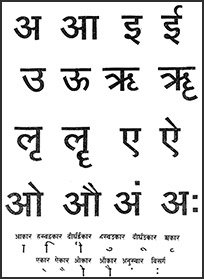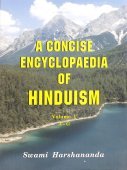Cakraka: 13 definitions
Introduction:
Cakraka means something in Buddhism, Pali, Hinduism, Sanskrit. If you want to know the exact meaning, history, etymology or English translation of this term then check out the descriptions on this page. Add your comment or reference to a book if you want to contribute to this summary article.
Alternative spellings of this word include Chakraka.
In Hinduism
Vyakarana (Sanskrit grammar)
Source: Wikisource: A dictionary of Sanskrit grammarCakraka (चक्रक).—A kind of fault in the application of operations, resulting in confusion; a fault in which one returns to the same place not immediately as in Anavastha but after several steps; cf. पुनर्ऋच्छिभावः पुनराट् इति चक्रकमव्यवस्था प्राप्नोति । (punarṛcchibhāvaḥ punarāṭ iti cakrakamavyavasthā prāpnoti |) M. Bh. on I. 3.60 Vart 5.

Vyakarana (व्याकरण, vyākaraṇa) refers to Sanskrit grammar and represents one of the six additional sciences (vedanga) to be studied along with the Vedas. Vyakarana concerns itself with the rules of Sanskrit grammar and linguistic analysis in order to establish the correct context of words and sentences.
Purana and Itihasa (epic history)
Source: archive.org: Puranic EncyclopediaCakraka (चक्रक).—The son, a Brahmavādin, of Viśvāmitra. (Anuśāsana Parva, Chapter 4, Verse 64).
Source: JatLand: List of Mahabharata people and placesCakraka (चक्रक) is a name mentioned in the Mahābhārata (cf. XIII.4.53, XIII.4) and represents one of the many proper names used for people and places. Note: The Mahābhārata (mentioning Cakraka) is a Sanskrit epic poem consisting of 100,000 ślokas (metrical verses) and is over 2000 years old.

The Purana (पुराण, purāṇas) refers to Sanskrit literature preserving ancient India’s vast cultural history, including historical legends, religious ceremonies, various arts and sciences. The eighteen mahapuranas total over 400,000 shlokas (metrical couplets) and date to at least several centuries BCE.
In Buddhism
Tibetan Buddhism (Vajrayana or tantric Buddhism)
Source: academia.edu: The Structure and Meanings of the Heruka MaṇḍalaCakraka (चक्रक) is the name of a Vīra (hero) who, together with the Ḍākinī named Cakrikā forms one of the 36 pairs situated in the Cittacakra, according to the 10th century Ḍākārṇava chapter 15. Accordingly, the cittacakra refers to one of the three divisions of the nirmāṇa-puṭa (‘emanation layer’), situated in the Herukamaṇḍala. The 36 pairs of Ḍākinīs and Vīras [viz., Cakraka] are black in color; they each have one face and four arms; they hold a skull bowl, a skull staff, a small drum, and a knife.

Tibetan Buddhism includes schools such as Nyingma, Kadampa, Kagyu and Gelug. Their primary canon of literature is divided in two broad categories: The Kangyur, which consists of Buddha’s words, and the Tengyur, which includes commentaries from various sources. Esotericism and tantra techniques (vajrayāna) are collected indepently.
Languages of India and abroad
Sanskrit dictionary
Source: DDSA: The practical Sanskrit-English dictionaryCakraka (चक्रक).—a. [cakramiva kāyati kaika] Wheel-shaped, circular.
-kaḥ Arguing in circle (in logic).
Source: Cologne Digital Sanskrit Dictionaries: Edgerton Buddhist Hybrid Sanskrit DictionaryCakraka (चक्रक).—(= cakra plus -ka, m.c. ?), circle: anādi-bhava-cakrake (Ārya-)Mañjuśrīmūlakalpa 434.21 (verse).
Source: Cologne Digital Sanskrit Dictionaries: Shabda-Sagara Sanskrit-English DictionaryCakraka (चक्रक).—m.
(-kaḥ) A logical form or proposition, arguing in a circle. E. kan implying resemblance, added to the last.
Source: Cologne Digital Sanskrit Dictionaries: Benfey Sanskrit-English DictionaryCakraka (चक्रक).—[cakra + ka], m. 1. A kind of snake, [Suśruta] 2, 265, 17. 2. A proper name, Mahābhārata 13, 253.
Source: Cologne Digital Sanskrit Dictionaries: Monier-Williams Sanskrit-English Dictionary1) Cakraka (चक्रक):—[from cakra] mfn. resembling a wheel or circle, circular, [Horace H. Wilson]
2) [v.s. ...] m. a kind of serpent (cf. cakra-maṇḍalin), [Suśruta v, 4, 34]
3) [v.s. ...] Dolichos biflorus, [cf. Lexicographers, esp. such as amarasiṃha, halāyudha, hemacandra, etc.]
4) [v.s. ...] Name of a Ṛṣi, [Mahābhārata xiii, 253]
5) [v.s. ...] n. a particular way of fighting, [Harivaṃśa iii, 124, 19] ([varia lectio] citraka)
6) [v.s. ...] arguing in a circle, [Patañjali]
7) Cakrakā (चक्रका):—[from cakraka > cakra] f. a kind of plant having great curative properties (white Abrus, [cf. Lexicographers, esp. such as amarasiṃha, halāyudha, hemacandra, etc.]), [Suśruta iv, 30, 3 and 19]
8) Cakraka (चक्रक):—[from cakra] m. (also) the ring on an umbrella, [Subhāṣitāvali]
Source: Cologne Digital Sanskrit Dictionaries: Yates Sanskrit-English DictionaryCakraka (चक्रक):—(kaḥ) 1. m. Arguing in a circle.
Source: DDSA: Paia-sadda-mahannavo; a comprehensive Prakrit Hindi dictionary (S)Cakraka (चक्रक) in the Sanskrit language is related to the Prakrit word: Cakkāga.
[Sanskrit to German]
Sanskrit, also spelled संस्कृतम् (saṃskṛtam), is an ancient language of India commonly seen as the grandmother of the Indo-European language family (even English!). Closely allied with Prakrit and Pali, Sanskrit is more exhaustive in both grammar and terms and has the most extensive collection of literature in the world, greatly surpassing its sister-languages Greek and Latin.
See also (Relevant definitions)
Starts with: Cakrakanike, Cakrakara, Cakrakaraka, Cakrakartri, Cakrakashraya.
Ends with: Ganacakraka, Malacakraka, Tricakraka.
Full-text: Malacakraka, Ganacakraka, Cakrika, Cakkaga, Cakrakashraya, Cakkirakam, Cakkarakapirasankam, Kamacakra, Citraka, Apekshin, Anyonyashraya, Cittacakra.
Relevant text
Search found 8 books and stories containing Cakraka, Cakrakā; (plurals include: Cakrakas, Cakrakās). You can also click to the full overview containing English textual excerpts. Below are direct links for the most relevant articles:
List of Mahabharata people and places (by Laxman Burdak)
A comparative study between Buddhism and Nyaya (by Roberta Pamio)
1.2. The Nyāya View < [Chapter 1 - The Nature and Criterion of Knowledge]
A History of Indian Philosophy Volume 1 (by Surendranath Dasgupta)
Part 22 - Jaina Atheism < [Chapter VI - The Jaina Philosophy]
Mahabharata (English) (by Kisari Mohan Ganguli)
Section IV < [Anusasanika Parva]
A History of Indian Philosophy Volume 4 (by Surendranath Dasgupta)
Part 3 - Tarka (ratiocination) < [Chapter XXVIII - Madhva Logic]
The Buddhist Philosophy of Universal Flux (by Satkari Mookerjee)
Chapter XXV - Prasaṅgānumāna < [Part II - Logic and Epistemology]
Related products
